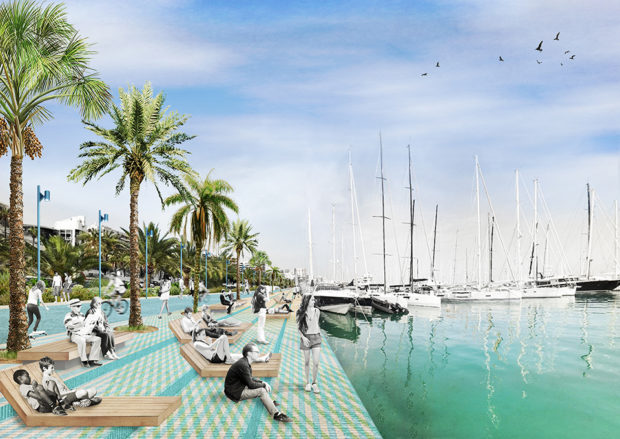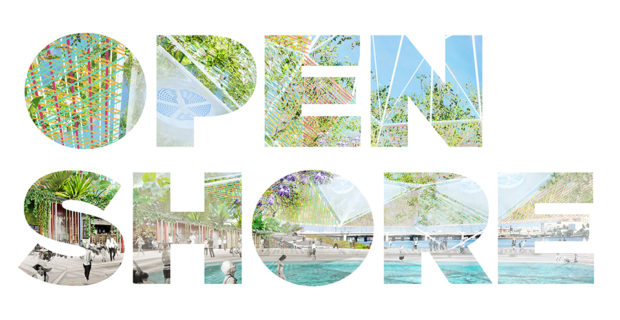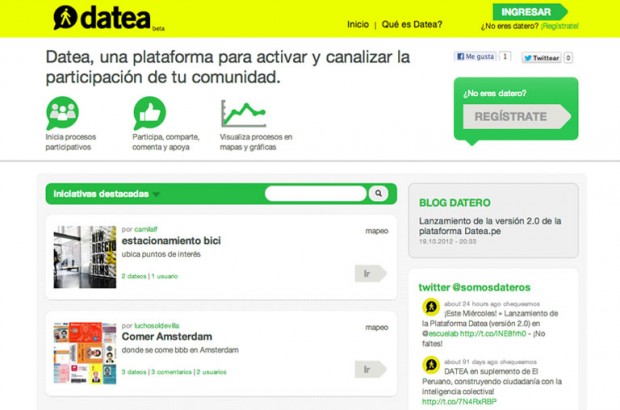
Concept drawing of the piers as landmarks
Ecosistema Urbano was recently selected as one of the five finalists in a competition of ideas for the waterfront (Bord de Mer) of Libreville, capital city of Gabon. We were selected by the committee of the Agence Nationale de Grand Travaux du Gabon among many other proposals. In their own words, the proposal “has strong linkages to existing urban systems, improves coastline’s connections and celebrates Libreville culture and history.” Here is a brief descripton of the project:
The main goal of our proposal is to reunite Libreville with the seashore, and extend the life of the city to the waterfront in some specific points. This would be achieved through operations of urban regeneration, adjusted to the existing and to the specific cultural, sociological and economical context. The proposal concentrates visual impact, identity and activity in five nodes, instead of spreading them too thin along the promenade.
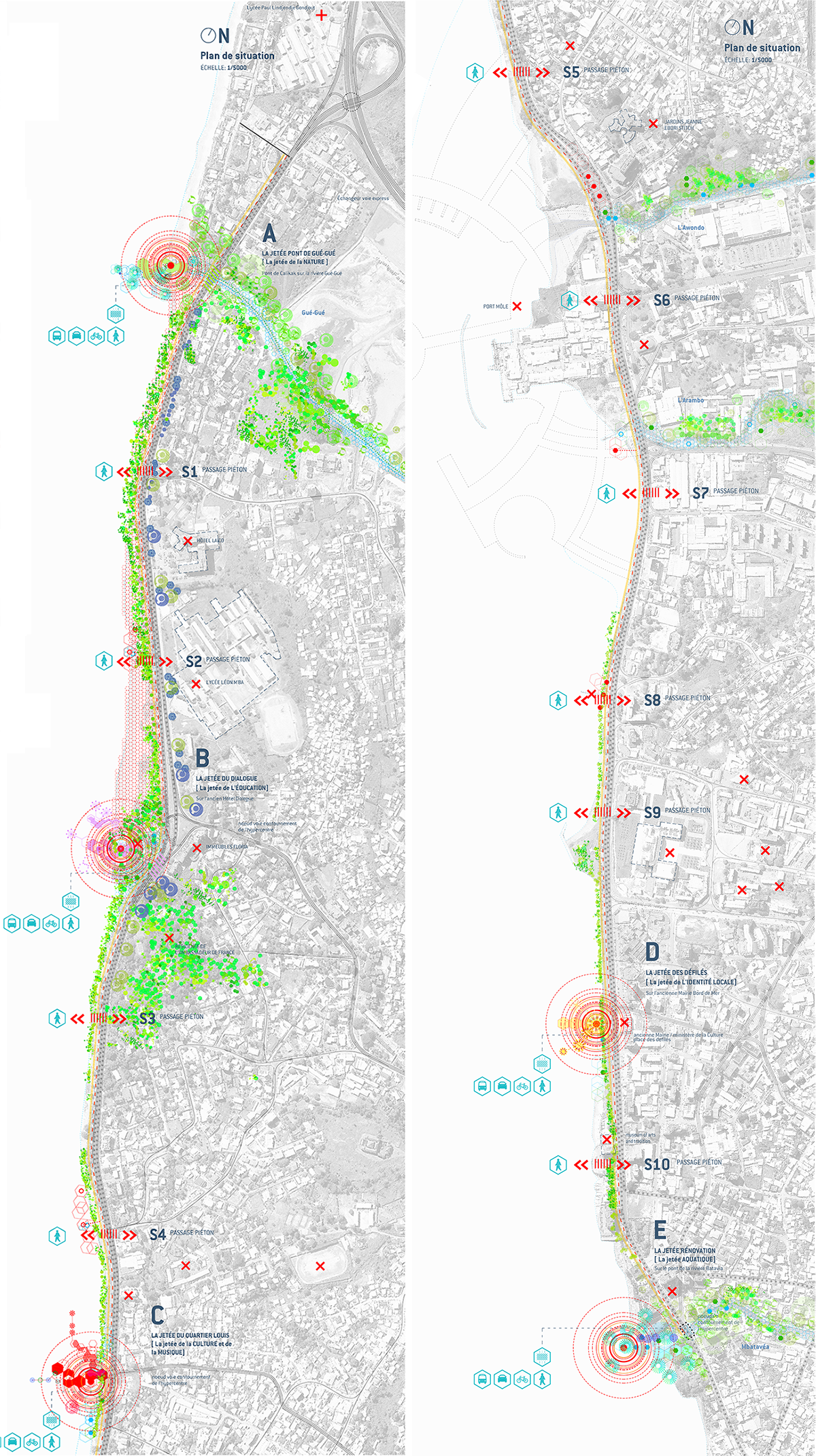
Plan of the coastal line of Libreville, in two sections
Those five pier-like structures (jetées) are a great way of getting closer to the water, of having a unique view of the city and at the same time of providing space for programs that could work as catalysers of the urban life. They act as unique landmarks, breaking the regularity of the very long promenade and facilitating the orientation of citizens. These points of “urban acupuncture” would drag attention and pull the urban life of Libreville to the seashore, providing a new space for citizens to interact.

Section of the biggest ‘jetée’

Section of one of a longer and lower pier structure
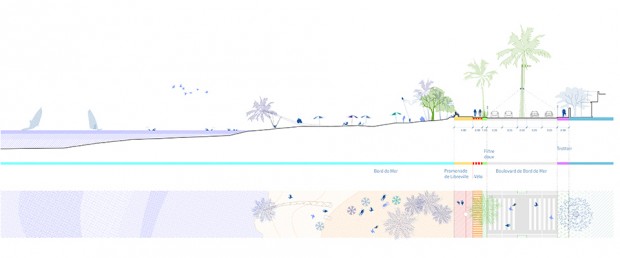
Section through a beach area, where the promenade is reduced to the minimum
The locations and uses of the piers are defined in relation to the city: to its flows, to the activity of the closest neighbourhoods and to the most relevant uses, buildings or public spaces nearby. Following that close relation with the surroundings, each pier has a singular character defined by the size, the shape, the vegetation, the dominant colors and other design factors, but also by the specific set of activities that can be performed in them. This way, we have the pier of Nature, Education, Culture and Music, Local Identity and Water.
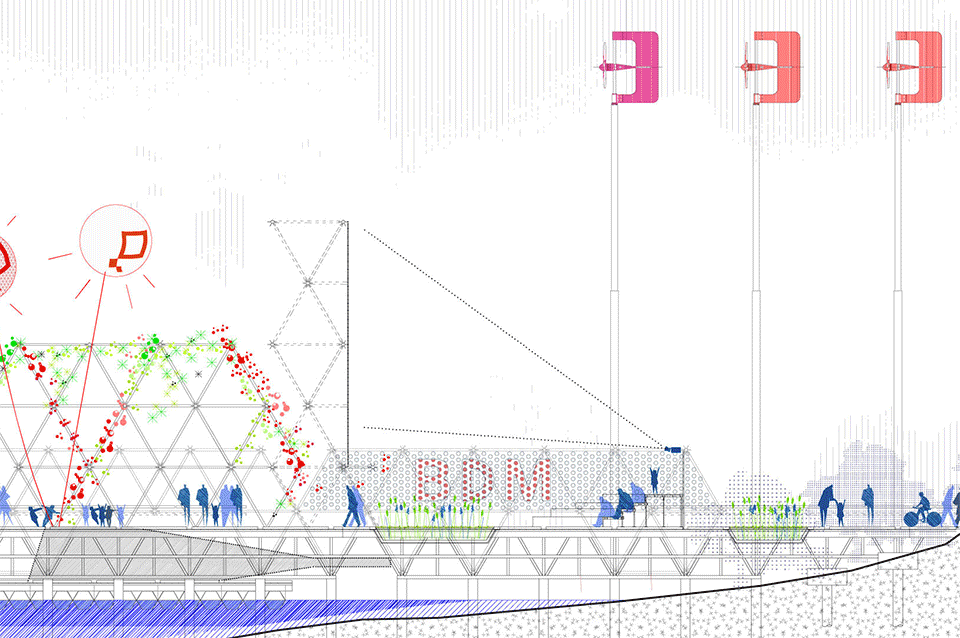
The use of the structures would change along the day
On the other hand, the linear promenade itself changes the configuration of its section depending, again, on the surroundings. Some key elements are defined in that section: the waterfront boulevard for (unavoidable) motorized traffic, a series of landscape markers (associated with energy production and visibilization), a coastal bike lane, a waterfront promenade, an urban appropriable fringe… This elements are combined, stretched or shrinked, generating diverse profiles and multiple areas of interest.

The crossings in front of the piers would be shared areas for pedestrian and motorists
Thus, while the promenade is kept simple, regular and clean, these structures act as landmarks, dividing the seafront in more aprehensible, walkable sections, and marking the coast like ‘signal fires’ or lighthouses: they provide visual clues to help the passer-by understand his exact location at a glance.
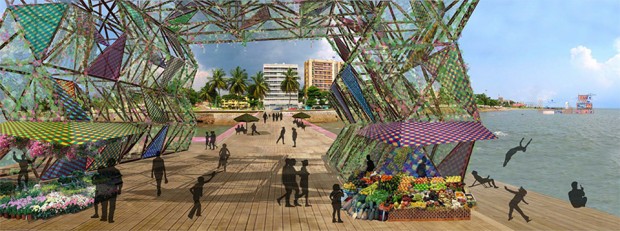
View from one of the piers
In addition, based on the rapidly rising mobile market penetration in Gabon, and as a bet on the potential of hyperlocalized digital networks for urban life, the proposal includes a digital application that would work as a geolocated and participatory cultural agenda for the waterfront, showcasing the activities along the line, attracting citizens and visitors, allowing them to search and follow events, and acting as a geographic map or guide.

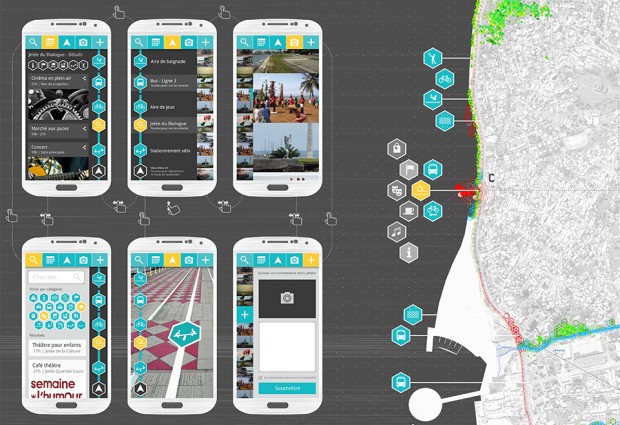
Tentative mockup for the application, based on the previous proposal for ‘BikeLine’
This proposal was developed in collaboration with the landscape architecture office Uberland.
